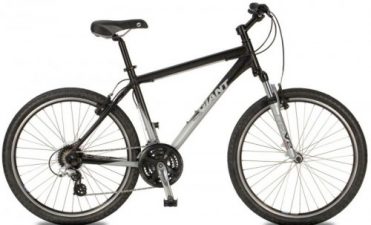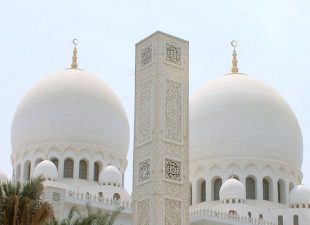 Nah, nobody does that goat thing anymore…
Nah, nobody does that goat thing anymore…
Our recent post about Israeli argan oil caused a few ripples over the Internet. While we now know that the old-fashioned “goat” treatment of the fruit is no longer used in Morocco except as a tourist attraction, we’ve also learned much about the success of growing the tree itself in Israel.
We interviewed Professor Elaine Solowey of the Arava Institute for Environmental Studies, responsible for most of of the argan tree’s propagation in Israel. Prof. Solowey has worked with argan trees since 1985. She worked in the National School of Agriculture, Meknes, Morocco, on a 7-year project aimed at increasing fruit yield. In more recent years, she has been developing argan propagation at the Arava Institute.
GP: Are the Israeli argan trees the same variety as the Moroccan trees?
Yes. Over the last 20 years, we have propagated trees in Israel from the original wild Moroccan stock. We use cuttings to obtain “copies” of particularly fruitful trees, which is difficult to do. Growing argan trees from seed is relatively easy.
GP: How many trees are there in Israel, and where are they located?
Compared to Morocco’s estimated 50 million trees, our numbers are small. I have 1000 in my breeding orchard (at the Arava Institute), but estimate about 20,000 trees around Israel. They grow in the Jordan Valley, near Mitzpeh Ramon, near the border with Egypt, and of course in the Arava. I suppose they could grow in the Galilee as well, if any one were interested.
Regarding growing conditions, we learned that argan trees thrive in desert conditions: hot days, cold night, salty soil. Many places in Israel offer the same conditions, but here the the trees are watered. The largest Moroccan trees grow in the Atlas Mountains, where there is more rainfall than in Israel.
Yields in Israel amount to an average of 60-80 kilos annually, compared to the 8-10 kilos from wild Moroccan trees. We asked Prof. Solowey if the more abundant yields will bring down the price of this fabulous oil.
In Morocco, the yield per tree is less significant, since they have so many, and there’s no expense in harvesting from wild trees. We have far fewer trees and they’re cultivated, needing expensive water. Another factor is the image, the romance of Morocco’s Berber-made argan oil, which we don’t compete with. But we aim to produce a cold-pressed, pure, organic oil with an affordable price, hopefully within the next 5 years. In the meantime, prices are unfortunately still high.
GP: So if goats are no longer in the picture (and Prof. Solowey was disdainful about this practice, which is continued only in a few places to attract tourists), how is the oil extracted from the argan nuts? What’s done with all the fruit?
The mature fruit falls off the tree and is harvested off the ground. The pulpy fruit makes excellent cattle feed. We’re trying to find a use for the nut’s hard shell, which is very difficult to crack. It burns well and can be pressed into buckboard, so we’re exploring those possibilities. Once the shell is cracked there are 1-3 kernels that look a bit like almonds, very rich in oil. Some are toasted, and their oil is for culinary use. Raw argan oil is used in cosmetics. Once the oil has been extracted by pressing, a pasty “oil cake” remains. Not many use it, but it’s very flavorful and can be added to cookies and power bars.
GP: We hadn’t thought of uses for argan waste. What can you tell us about the leftovers, once the oil’s been extracted?
The Berbers make a paste like peanut butter from toasted oil cakes, called amalou. They spread it on bread and oil their tajines with it. It’s not used for frying; rather it’s used like sesame oil is in cooking – like a flavoring. They also make a porridge-like dish called sematar.
Raw argan oil is an excellent cosmetic base, being full of vitamin E. Since I’m out in the sun all day, I use it as a sunscreen. And it’s an effective burn treatment, especially combined with aloe vera.
The Berbers say that one daily teaspoon of argan oil increases male fertility, but I can’t vouch for that.
So – are there authentic argan trees in Israel? Yoni Sharir, who grows them at the Orlyya Farm, Negev, invites our readers to “Come to me and see the trees.”
For those who’d like to taste amalou, but don’t have access to plenty of argan oil cakes, this recipe approximates the flavor. (If you can afford 1/2 cup of argan oil, that is.) This spread is said to have aphrodisiac and fertility-enhancing properties, and is sometimes given to bridal couples. Our Moroccan Anise Flatbread would make an ideal base for the spread.
Recipe for Amalou, Argan Spread
Source: bellaonline.com
8 ounces Almonds, roasted
1/2 cup Argan Oil
1/4 cup Honey1. Place almonds and argan oil into a food processor, blender, or mortar and pestle.
2. Grind almonds and argan oil to the texture you prefer. You may need to add more argan oil depending on the texture and consistency you like.
3. Add in honey if desired one tablespoon at a time stirring well.
Store amalou in a sealed container at room temperature.
Try some of these other Moroccan treats from Green Prophet:
:: Arava Institute for Environmental Studies
:: National School of Agriculture, Morocco
Photo of argan fruit from Argan Treasures.



I live 2 hours north of las vegas, nevada. High desert, dry with iron in the dirt, not salt. It does freez in the winter below zero at times and as hot as a hundred degrees in the summer. I want to purchase argon seeds or trees. Let me know if this is possible. Thank you christina austin
Thanks for the update. It explains a lot.
If yu want Moroccan argan oil (it’s the only country in africa who produce it) check this website : http://www.arganoils.com/french/about_arganoils.html
Savorique, I can’t answer for Moroccan argan oil, but you can order the Israeli product online from Argan Treasures (link is in the next-to-last line in the above post).
Glad to learn Israel is now growing argan trees. Do you know where I can find argan oil from Israel (and/or from Africa) in the US? Thanks!